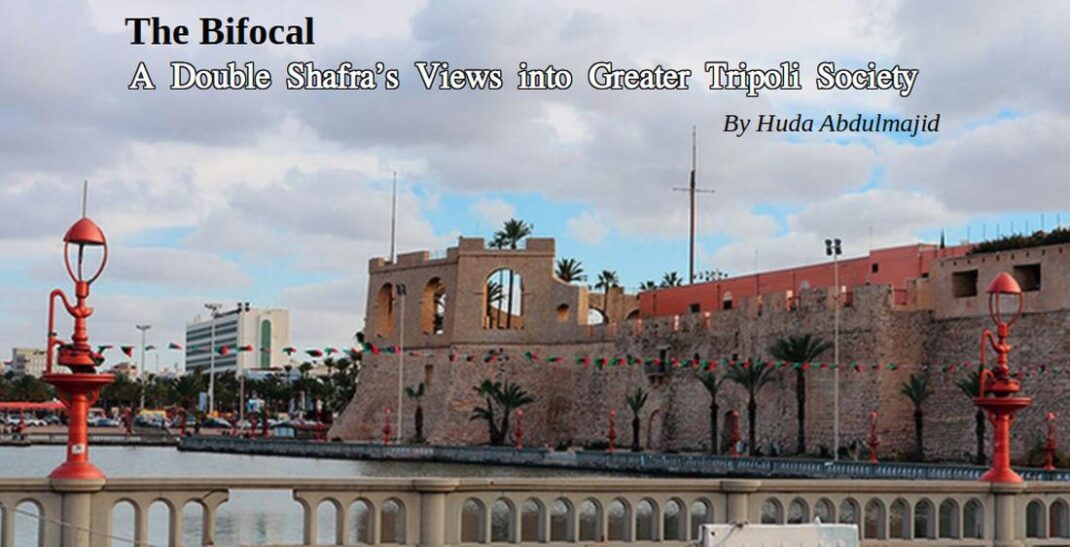Shinu ghdakum? I was asked this question once just after arriving at a gathering in Libya. As I leaned in to greet a woman the traditional way – four kisses, twice on either cheek; I was confused to be asked about what I ate for lunch that day.
The timing of the question took the place of a, How are you? So, I assumed my interpretation of the phrase was flawed. However, the woman did in fact want to know what I had for lunch. A question I found oddly considerate, and well, a bit nosy.
It was this first experience with the question that I began to realize the importance of food in Libyan culture, and the emphasis that is placed on the preparation and serving methods in even the most ordinary events in Libyan society.
One can be introduced to Libya’s food system at just about any gathering. Libyan women rarely give up the chance of displaying their cooking skills in order to fulfill the value shared by most Arab cultures, hospitality.
The average Libyan diet is a short-listed menu of main dishes with few modifications made between the cities and suburban areas in Libya. It comprises of a number of savory dishes, all of them red and made from what are considered essential ingredients: onions, tomato paste, potatoes, oil, salt, red pepper and turmeric.
It wouldn’t be an exaggeration to say that almost every Libyan dish is dependable on the availability of these key ingredients. These ingredients contribute to the creation of the marga, or main sauce.
Dishes are thereafter distinguished by the starch base, either rice, couscous, macaroni and even barley.
The results: steaming bowls of the familiar tastes of childhood. The smell of ground cinnamon sprinkled over the finished product balances the spicy marga, and beckons Libyan families to gather round to share another meal with another.
Food, in every culture brings family and friends together. To understand the food of a culture is to better understand the people themselves and their taste.
The older generations in Libya share a common fondness to the meals they have grown old eating, and they often reject the idea of diversifying their meals when the younger generation introduces new dishes.
Unfortunately, many of the newer dishes that Libyans have come to enjoy are fried finger-foods and with as little health benefits as Libya’s red dishes.
According to an FAO analysis, the Libyan diet’s staple ingredient is wheat. The source of 62-67% of daily energy supply is carbohydrates, 22-27% is fat, and 10-11% protein. In comparison to other Maghreb countries, Libya has the highest fat and meat intake.
These numbers, along with a report written by Dr. Yousef M. Elshrek that averages the energy consumption rates in 1999 at a little over 3,700 kcal daily (a rate that exceeds the standard needs for any age), the risk of obesity developing as a future national concern is apparent.
Not only will this be detrimental to Libya’s already weak health system, but it will also be an economic blow, which is why it is so important to take the necessary actions of preventing it from developing.
In 2000, the total cost of obesity in the United States for children and adults was estimated at 117 billion USD. Libya could spend a mere fraction of that in preventive and educational services, and it would be saving the country health problems and money in the long-run.
There is no doubt that Libyan food tastes good. It is part of the problem, and it is why Libyans tend to eat so much of it. Although ignorance of calorie intake sounds like bliss, the hard truth is that a lack of nutritional concern has cost other nations billions of dollars in reversal measures.
Libyans all over the country and abroad share a love for Libyan food. The recipes that have been passed down for generations aren’t going anywhere, and we don’t want them to.
The Libyan diet may lack a sense of diversity that other cultures have; however, that also means diverse Libyans have something to relate to. If we don’t modify our eating habits by adding greens, or perhaps by eating less bread with that macaroni, at least we can all be fat and happy together!
____________________
Previously published in ‘Tripoli Post’ on May 31st 2012




